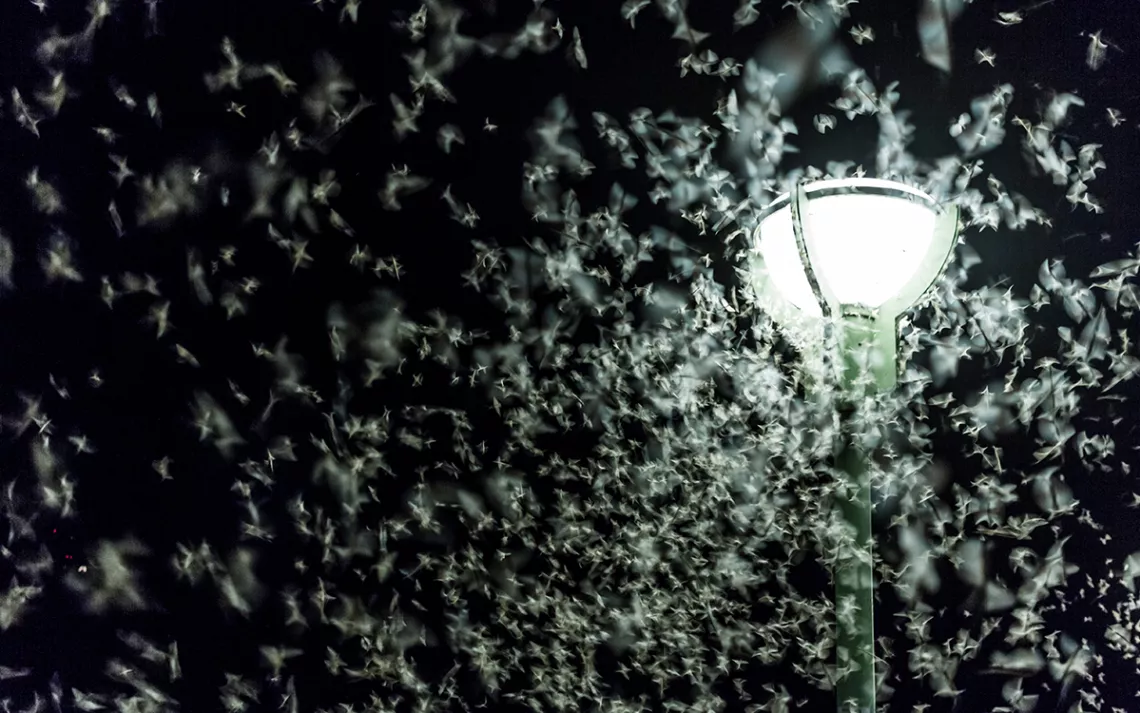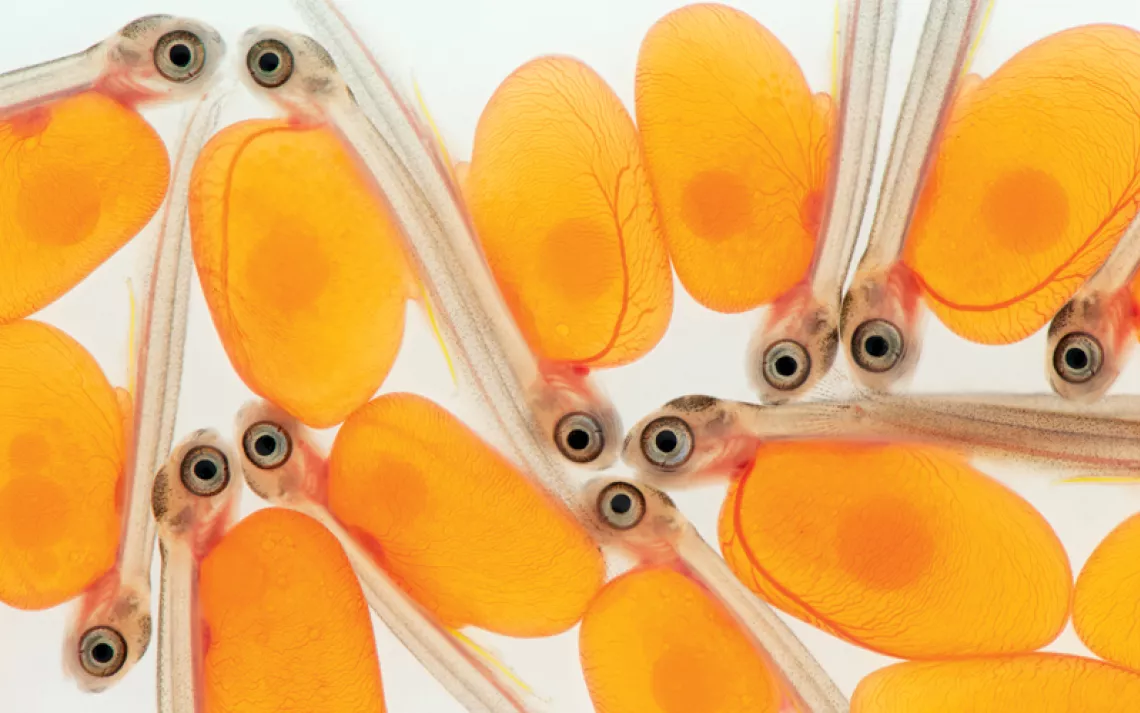New Study Shows Urban Lighting Disrupts Rural Insects
What’s the answer? Turn down the lights.

Photo by MichalRenee/iStock
Light pollution is an ongoing threat to our ability to see and enjoy dark skies. But recent studies have found that insects and other creatures are also vulnerable to artificial light. In some cases, it can even be deadly.
A recent study measured the effects of artificial light at night on a common species of moth, Chiasmia clathrata. Two groups of moth larvae were exposed to different night conditions: dark for the control group, and for the test group, slightly brighter light than a full moon, equivalent to what they called “skyglow.” Each group was divided into rural and urban insects, and each in turn was subjected to different photoperiods (ratio of day to night) to mimic night exposures at two latitudes, mid- and northern European, depending on their origin.
The results were clear. In both rural and urban test groups, even indirect, artificial light affected diapause—a kind of dormancy that allows an insect to avoid cold, drought, or other conditions. In natural settings, this would be fatal.
“Insect declines are a hot topic, and several recent studies had shown negative (direct and indirect) impacts of light pollution on moth species communities and moth numbers, likely resulting from impacts at the organismal level (e.g., behavior, physiology, development),” biologist Thomas Merckx, of Brussels's Vrije Universiteit, which produced the latest study, wrote in an email. “However, directly lit sites form only a fraction of the total land mass, whereas indirect light pollution (skyglow) currently already impacts one-fourth of the global land mass. This inspired us to check for effects of dim light pollution levels on moth development.”
Ironically, warmer winters may end up aiding C. clathrata and other insects with over-wintering pupae. Rising temperatures can cause “a genetic shift in diapause induction,” wrote Merckx. Moths will adapt by delaying their pupal phase until later in the season, when they are more likely to survive, and pass on their genes to offspring. “However, outside cities, the urban-heat-island effect is not present, but skyglow still is—so the risks are bigger for rural than for urban populations.”
Think of how common it is for cities to light up the night sky. Merckx said the intensity can range between 0.1 and 10 lux—many times brighter than a full moon on a clear night. Artificial light endangers many species of insects whose larvae must hibernate, as pupae, and emerge as adults in the spring. Photoperiod tells them when to start metamorphosis. For that they need sufficiently dark skies at night.
Insects often appear in large, conspicuous groups, such as clouds of mosquitoes or midges on a hot summer night. Or at least that used to be the case (even if there will never be too few mosquitoes for some people). The masses of insect life that have provoked revulsion, awe, and fear throughout history are becoming increasingly rare. The consequences can be quietly devastating throughout the food web. In many places, once-robust populations of insectivorous birds, like swallows and flycatchers, are already declining. Insects also benefit plants in multiple ways—everything from pest control to nutrient recycling. Of course, we, too, depend on insect “services,” like crop pollination.
European moths in higher latitudes, such as Scandinavian countries—the Land of the Midnight Sun—may be adapted to wider variations in photoperiod throughout the year, so they have a slight edge over their cousins to the south. In lower latitudes, moths have come to expect less extreme day-length variations and are therefore more vulnerable to skyglow effects.
The obvious solution would be to turn down the lights. Easier said than done. People associate darker streets with higher crime, among other things. City planners might find a compromise if they ensure current lighting shines down, where it's most useful, instead of spilling wastefully into the sky. Some modest progress, such as the designation of dark sky communities, is already underway in many places, in part motivated by the human desire to stargaze. Concerns about migratory birds crashing into brightly lit buildings on their flyways have also led to calls for strategic reduction in nighttime lighting—or its alteration.
Change will be slow, especially as LED lighting rises in popularity. Yet conservationists hope that as the various health costs from light pollution become better known, urban planners will adjust. Relatively low-tech changes, if widespread enough, could bring multiple benefits for countless species (ours included) that depend on light but value its timely absence just as much.
 The Magazine of The Sierra Club
The Magazine of The Sierra Club







